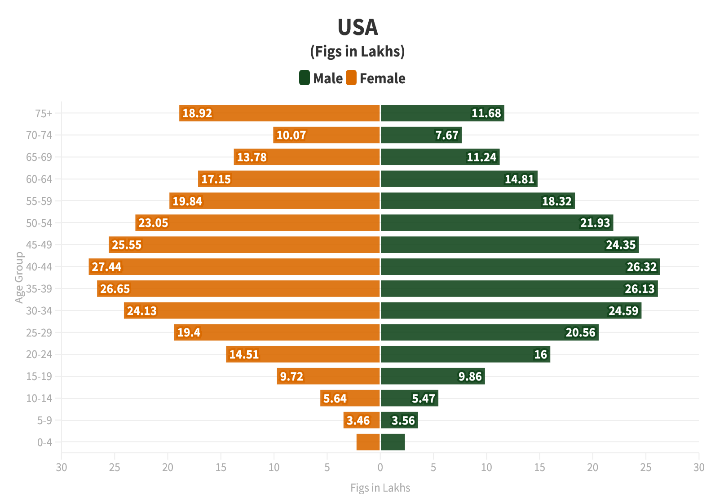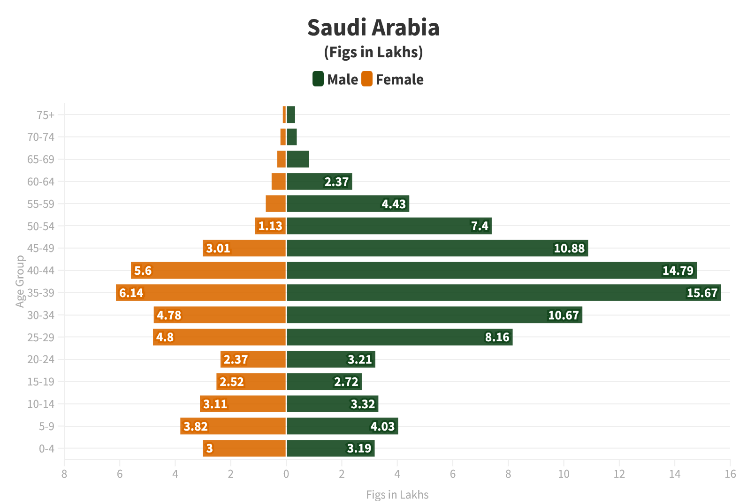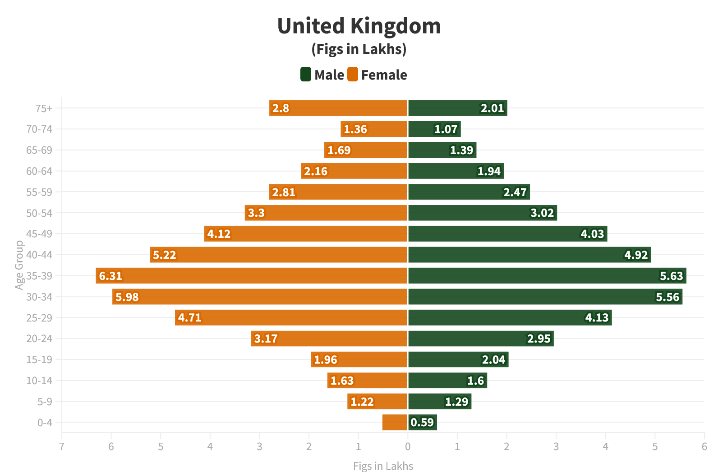Migration and Development of Asian Countries
Exploring the probability of incorporating geographical and developmental studies by examining migration characteristics in Asia using the latest existential data and the literatures and, as a result, built alternative analytical frameworks.

Abstract:
Migration is recognized as an important tool for promoting development and provides a pathway to alleviate deepening inequalities. National regimes, international funding organizations, and diasporic organizations have all mobilized migrants to fund development initiatives in their ‘origin’ countries. This study mainly focuses on migration and development in Asian countries. Our study explores the probability of incorporating geographical and developmental studies by examining migration characteristics in Asia using the latest existential data and the literatures and, as a result, built alternative analytical frameworks.
Introduction:
Migration is one of the fundamental factors in the history of human community formation, an organic part of social relations. Its specificity is that the gregarious structure of countries, both in ecumenical and local dimensions, was composed not only through economic and technological progress, but additionally under the influence of sizably voluminous-scale social movement. In different historical epochs, migration waves vary according to the degree of social and cultural change. In the modern world, migration occurs as a result of uneven economic development of countries, environmental disasters and changes in the public policy. Rapid globalization and the emergence of new patterns of international relations involving the movement of goods, capital and ideas have always resulted in the movement of people and vice versa (Hein de Haas, 2020). The number of international migrants increased by 83% in 2020 compared to the 1990s. Estimated 280.6 million people worldwide.
Global International Migrants:
In figure1, Current global estimates put the world at about 280.6 million international migrants in 2020, accounting for 3.6% of the world's population. The estimated number of international migrants has increased over the last three decades. The total estimated 280.6 million people living in a country other than their countries of birth in 2020 which was 127.61 million more than in 1990, and the increase in 2020 from 2015 was over four times higher than in 1995 from 1990.

Fig.2 and Fig.3 explains about the international migrants in origin and destination regions. In 2020, Europe and Asia were the largest destination regions, each hosted approximately 86.7 million and 85.62 million international migrants respectively, representing 61.4% of the world's stock of international migrants, followed by Northern America (58.71 million international migrants in 2020, 20.9% of the global migrant stock), Africa (25.39 million, 9%), Latin America and the Caribbean (14.79 million, 5.3%), and Oceania (9.38 million, 3.3%). In Fig.2, data reveals that top source regions were Asia and Europe where highest migrants sent to the destination region, each contributed 114.91 million and 63.27 million respectively, showing 63.5% of the global stock international migrants in 2020, followed by Latin America And The Caribbean (42.89 million, 15.3%), Africa (40.57 million, 14.5%), Others (12.66 million, 4.5%), Northern America (4.33 million, 1.5%), and Oceania (1.9 million, 0.7%). However Asia accomplished the highest increase of international migration around 37.41 million (77.6% growth) in 2020 from 1990, followed by Europe who experienced 37.1 million (74.8% growth) international migrants, placed at second highest position, Northern America (31.1 million, 112.6% growth), Africa (9.7 million, 61.8%).


Top Destination countries of International Migrants:
In Fig. illustrate that 59% of the international migrants lived in the top 15 countries in the world in 2020 with an increase of more than two times from 1990. Globally, only 25 countries experienced more than 70% of the international migrants. More than 18% (50.63 million) of the international migrants lived in the United States of America, the largest in the migrants' population globally. Germany and Saudi Arabia gained second and third position and each hosted 15.76 million and 13.45 million respectively and represented a growth of approx. 5% each, followed by the Russian Federation (more than 11 million, 4% globally), the United Kingdom and the United Arab Emirates (approx. 9 million). India experienced the fourteen largest international migrants globally (nearly 4.88 million, 2% of total), where only the foreign-born population and refugees resided.

Demographic features of international migrations in top destination countries:
In 2020, we have seen most the international migrant’s destination was the USA. In the USA, the women comprised higher increase in numbers with a growth of 5% in 2020 from 2000 in 15-24 age group, where 4% declined in numbers in case of male percentage in the same period. 25-49 age group reveals, 31% increase in male migrants in 2020 from 2000 but female migrants experienced 8% higher increment from male. The USA gain approximately same percentage of growth both male and female migrants in 50+ age group. Germany was the second highest migrant destination country where 44% of the migrants from 25-49 age group in 2020 and fell 6% from 2000. In 20-24 age bracket, the male and female hosted an opposite sign in growths. Male migrants experienced a two digit growth of 23% where female number decreased 10% in 2020 from 2000. In the UK, 54% of the migrants were in the 25-49 age bracket. The share of men in the total number of international migrants in the UK slightly fell from 52.9% in 2000 to 52.3% in 2020 and small increase in female from 47.1% to 47.7%. The women and men in Russia declined above 33% in 2020 from 2000 in 15-29 age group. 30-34 age hosted a one digit growth above 8% and 40-49 experienced a negative growth in both male and female. From 2000 to 2020, Saudi Arabia represent a drastic change in numbers of international migrants. 63% of the total migrants (45% male and 18% female) in the age group 25-49 in 2020. The men and women in the total number of migrants in Saudi Arabia from 66.8% and 33.2% in 2000 to 68.6% and 31.4% in 2020, respectively. When we looked at India as a destination country, the growth of female increase to 21% and male declined to 2% in 2020 from 2000 in the 20-34 age group. India experienced a two-digit decline growth in the 35-54 age brackets in 2020 from 2000.






International migration in Asia:
About 41% of the global international migrants were originated from Asia, making the region the largest source. Asia is a continent of intra-regional migration, with 84% of migrants moving within the region. Emigrants from eastern Asia move to neighbouring countries in eastern Asia, emigrants from Western Asia move to its neighbouring countries within Western Asia, and emigrants from central Asia move within central Asia. In 2020, the highest volume was from the Southern Asia to Western Asia around 19 million emigrants moving to Western Asia but in 2000, the volume represent the second highest movement around 5.84 million. The Southern Asia to Western Asia movement remain highest in last decade. The expansion of connectivity between distant regions is driven by technological innovations that have reduced the cost of long-distance communication and travel.


As per United Nations statistics, India is the world's largest source of international migrants last three decades, it has a rich history of immigration and emigration. India has 17.87 millions of emigrants in 2020 which was around three times higher than in 1990. China stood at second position in the top Asian source countries and remain in that position since last two decades. Syrian Arab Republic jumped to third place from 24th position in 2000. Bangladesh changed from third position in 2000 to fourth in 2020, followed by Pakistan, Philippines, Afghanistan, Indonesia and Kazakhstan.

India:
The massive India diaspora is now found across the globe. More recently, the Middle East and Western countries have been top destinations for Indians abroad. 46% of the India’s 17.87 million emigrants in 2020 lived in Persian Gulf countries, with proximately 3.47 million in the United Arab Emirates alone, followed by Saudi Arabia nearly 2.5 million, Kuwait 1.15 million, and Qatar 0.7 million. Overall we observed that United Arab Emirates was the top destination for Indians abroad for last decade and placed at fourth position in 2000. United States of America is the second largest destination for India’s 2.72 million emigrants in 2020 and remain same rank in 2000 with 1.05 million. India is now a top origin country for immigrants in the United States, followed by China and Philippines. This magnification was made possible by the 1965 abolition of the domestic-origin quotas, which had guided U.S. immigration policy since the 1920s and discriminated against Asians and other north-western Europeans. More than two times of Indian emigrants are in 2020 from 2000 in Saudi Arabia and placed at third in top destination countries, followed by Pakistan (rank 1 in 2000), Oman(rank 8 in 2000), Kuwait (rank 7 in 2000) and United Kingdom(rank 6 in 2000).

India has been a popular destination for international migrants for centuries, with proximately 4.87 million foreign-born residents in 2020, making it the 14th most-populated destination country in the world but immigrants make up less than 0.4% of its 1.4 billion population. The great bulk of India’s immigrants now emanate from neighbouring countries in South Asia. According to the United Nations, the number of migrants to India, mainly from Bangladesh declined significantly in last three decades, from about 7.59 million in 1990 to 4.88 million in 2020. Bangladesh's emigrants are also diversifying, with more people heading to the Middle East and other destinations. 2.49 million Bangladesh migrants moved to India in 2020 which declined 36% from 2000, followed by Pakistan, Nepal, Sri Lanka, and China.

Migrant Remittances Flow:
International migrants generally contribute to the economic and social development of both countries of origin and destination. Remittances by migrant workers are now an important source of funds for many developing countries. Some countries encourage the development of diaspora abroad or help existing diaspora to contribute to national development initiatives. Most migrants send money to their family and others in their countries of origin to support household consumption and help alleviate poverty. It has been seen that there is a huge growth in inflow of remittances into different regions. Out of global total of $773.19 billion, 45% of the remittances went to Asia region in 2020 which was more than seven times higher from 2000. Nearly 24% went to Europe, 18% went to Americas, and 12% went to African countries.

According to the World Bank, Remittances to India have exploded in recent years and received U.S. $89.37 billion in official remittances in 2021, making it the world's largest remittance inflow and nearly seven times higher than its 2000 inflow, accounting for approximately 14.77% of global remittances to Low-and Middle-Income Countries and 11.56% to the world. Mexico is the world’s second largest remittance inflow country and the estimated U.S. $54.13 billion received through formal channels in 2021(seven times higher from 2000), followed by China (U.S. $53 billion and nearly seventy time higher from 2000), Philippines (U.S. $36.69 billion and above five times higher from 2000), Egypt (U.S. $31.5 billion and above eleven times higher from 2000), and Pakistan (U.S. $31.21 billion and above twenty-nine times higher from 2000).

Most recently, outflow of remittances from the European and Asian countries like Russia, Luxembourg, Netherlands, France, Italy, UK, Saudi Arabia, China, Qatar, Korea, Malaysia etc. Both Europe and Asian regions combined contributed 73% of the remittances to the world in 2020, followed America, Oceania, and African regions.
The United States is the largest destination country for international immigration and also the largest remittance country for international remittances in many decades. In 2021, the United States contributed U.S. $74.58 billion remittances to other countries and experienced two times higher contribution to the global remittances from 2000. Saudi Arabia outflow remittances contributed U.S. $40.74 billion, followed by China, Russia. Luxembourg, Netherlands, and France send more than U.S. $15 billion each to other countries.


References:
1. Haas, Hein de. “Migration and Development: A Theoretical Perspective.” International Migration Review 44, no. 1 (March 2010): 227–64. https://doi.org/10.1111/j.1747-7379.2009.00804.x.
2. Haas, Hein de, Castles, S., & Miller, M. J. (2020). The Age of Migration: International Population Movements in the Modern World.





